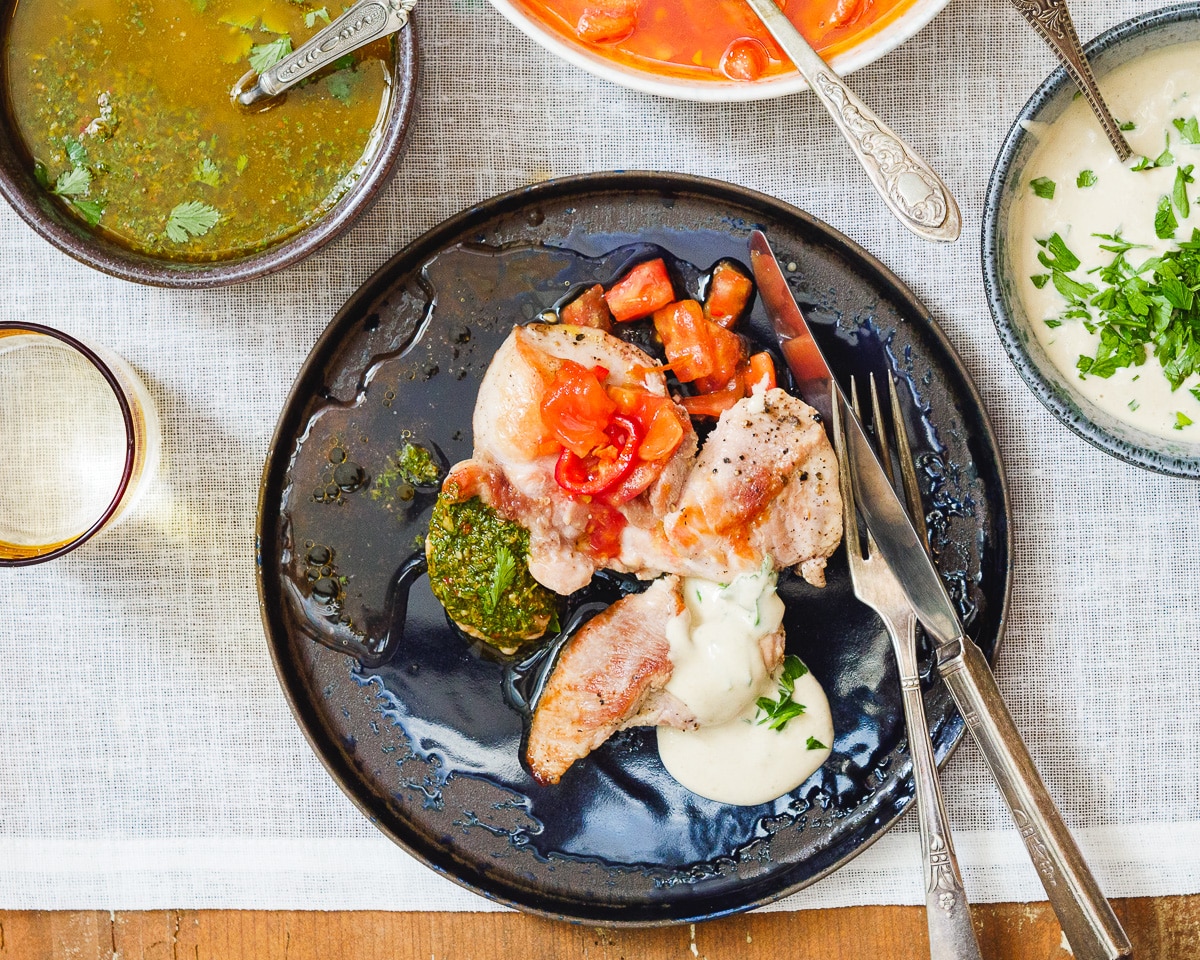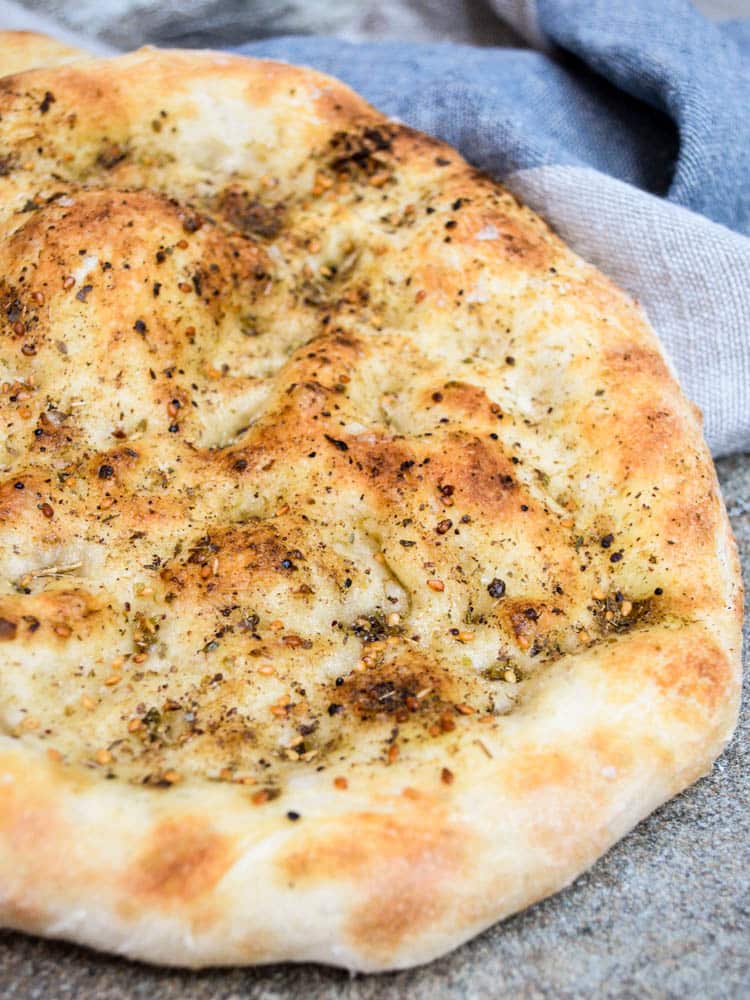Tahini tarator is a delicious tahini sauce with a refreshing touch of parsley.
In Lebanon and Syria, the sauce is widely used with fish. It works a treat! For extra flavour, sprinkle a bit of sumac on top when serving with fish.
In Turkey, tahini tarator is served as a meze dish in its own right. It’s then often topped with a lot more parsley. The parsley may also be blended into the sauce itself rather than sprinkled on top.
The sauce also works wonders with meat, chicken and dishes with lots of spices. In other words, it’s a good all rounder when you’re looking for an easy way to add flavour to your Middle Eastern inspired dish!

A note on using tahini
As the name suggests, tahini is the main ingredient of tahini tarator. Tahini is a paste made from 100% toasted and ground sesame seeds.
Unfortunately, the quality of tahini varies substantially. A good tahini should be smooth and delicious when eaten straight from the jar. Conversely, low quality tahinis can be bitter and feel claggy.
Availability depends on where you live, but as a general rule, Arab brands are superior to Western brands. As with anything, there are exceptions to this rule, so I can only recommend you try different brands until you find one you like.
Tahini is a natural product that separates into three layers when left to stand. It’s therefore important to mix the tahini well before every use. I use a fork for this, making sure to catch any sediments stuck at the bottom of the jar. This mixing can take anywhere from a few seconds (if the tahini was used recently) to a couple of minutes (if it’s been a while since you last used tahini).
Store tahini in the kitchen cupboard – there’s no need to use fridge space for it. It’ll still keep well for several months.

Tahini tarator
Ingredients
- 120 g tahini
- 3 Tbsp lemon juice
- c. 100 ml water
- 1 garlic clove, finely mashed with a bit of salt
- ¼ tsp ground cumin
- 2–3 Tbsp finely chopped parsley
- salt
How I make it
- Mix tahini and lemon juice. This will thicken considerably. Gradually add water until you achieve a consistency which is thick, but runny.
- Add garlic and cumin and mix well. Season with salt.
- Serve topped with parsley.














